

Ever since we mastered the outdoors, people have decided to bring the outdoors indoors. This could be because more and more people are spending most of their time indoors, all thanks to the aftermath of the pandemic.
Aside from being aesthetically pleasing and Instagram-worthy, houseplants are also believed to improve the quality of air, health and well-being, reduce stress, and even lower your blood pressure.
There is so much to consider when trying to create a home jungle. But no need to fret – this article will show you everything you need when turning your home into a home jungle or decorating with plants.
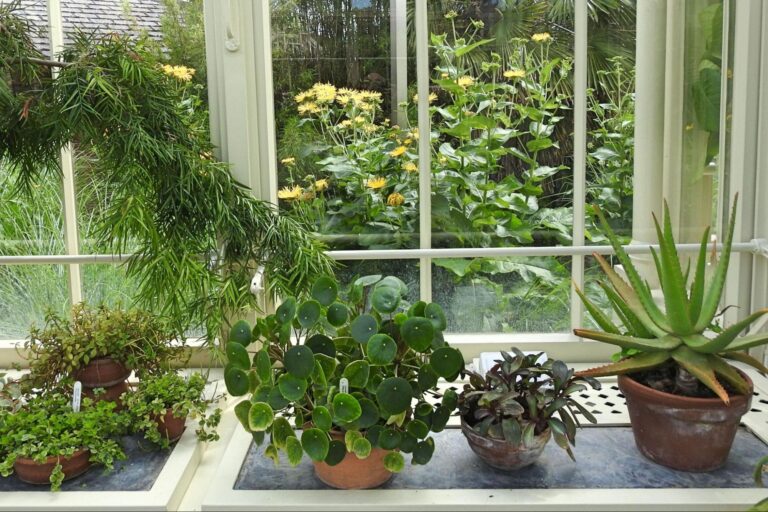
SUBSCRIBE
AND GET THE FREE NEWSLETTER

The plants you choose to grace your living space will largely depend on your apartment’s or house’s conditions such as lighting, temperature, and more factors. Let’s go over them one by one.
The lighting in your home plays a major role in the type of plants that will thrive in it. Here are a few things to take note of – the direction of your windows, how much light your space receives, what kind of light it receives, whether it receives direct or indirect light.
You should also take note of the particular time light enters the window, the quality of light, where the light travels to, and when the sun rises and sets. This helps you know how many hours of daylight you will receive during summer, winter, spring, and fall.
Taking note of the quality and amount of light your home receives can be easily done through what is called the “reading test”.
In the afternoon, turn off all indoor lights and try reading any book or piece of paper in different corners of your home. If you can read comfortably, that means that area of the home has medium indirect light.
If you find it difficult to read and start straining your eyes, then that area has low light. But if you feel the need to reach for your sunglasses or avert your eyes, then you have a bright indirect or direct light situation.
Of course, you can always use a light meter to measure the quality of light if you feel more comfortable with that.
Knowing the quality of light in different areas of your home will help you decide what areas plants will thrive best in.

It is key to take note of the temperature of your home when you are decorating with plants. The ideal temperature would be room temperature in summer and spring.
When focusing on temperature, you should also know your humidity. Taking note of the humidity levels in various areas of your home is very important. This is the only way you can create a conducive environment for your plants without letting the temperature cause your walls to rot.
Different corners of the home can have varying levels of humidity. Some can be 45%, 60%, or 75%. You have to know which areas possess the most humidity so you can pick the best places to grow your plants.
To know the humidity levels of different parts of your home, place a hydrometer in each area.
Most plants thrive in 60% to 70% humidity levels. This level is also low enough for you to live comfortably in your home as well.
However, if your home’s humidity level is lower than this percentage, you can simply increase it by buying a traditional humidifier or essential oil diffuser.
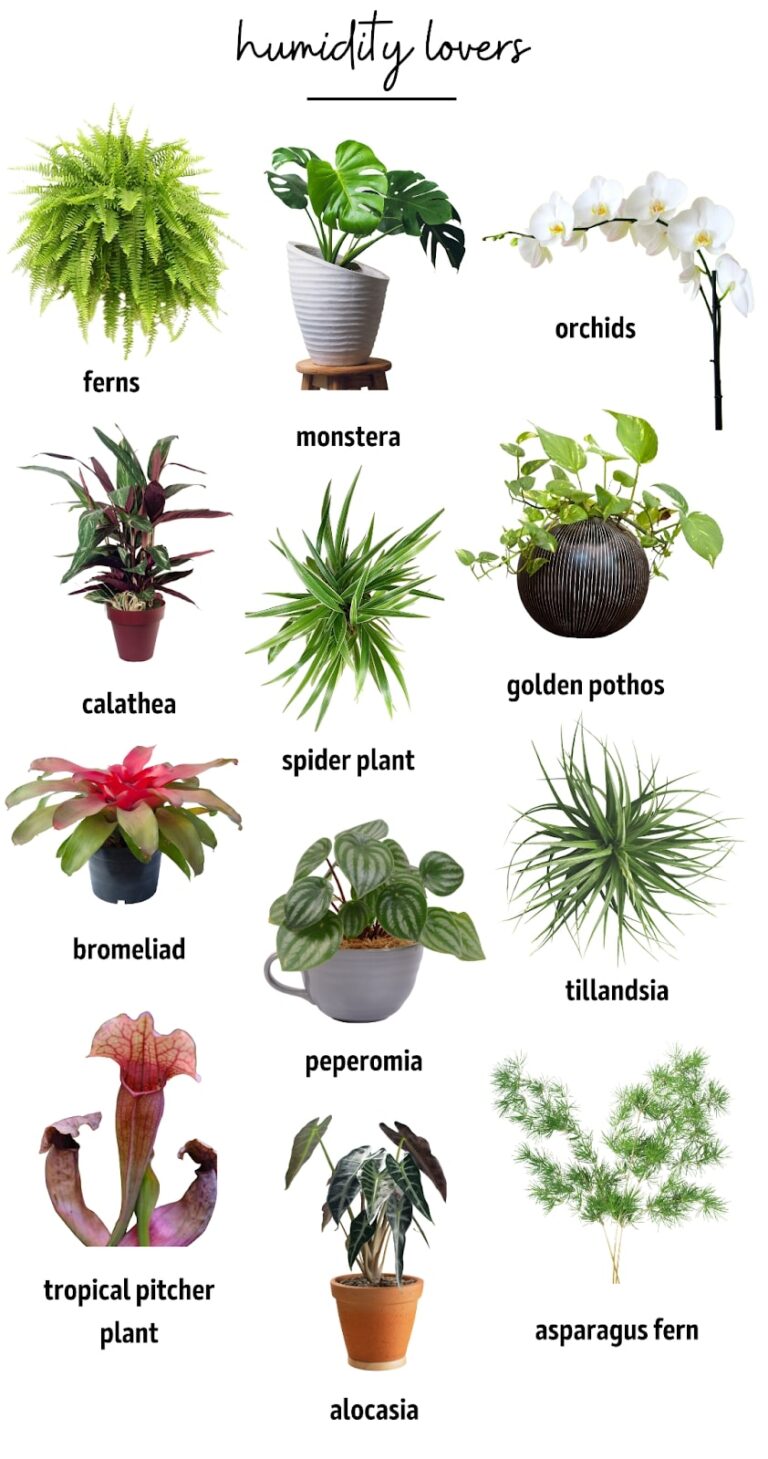
Of course, your plants are not going to remain small forever. They are going to grow, that way you know they are thriving. And for that, they need enough space or room.
You can place the plants on tables, desks, or any flat surface with no restrictive perimeters. This way they can grow in any direction with no restriction and no shade hindering their growth.
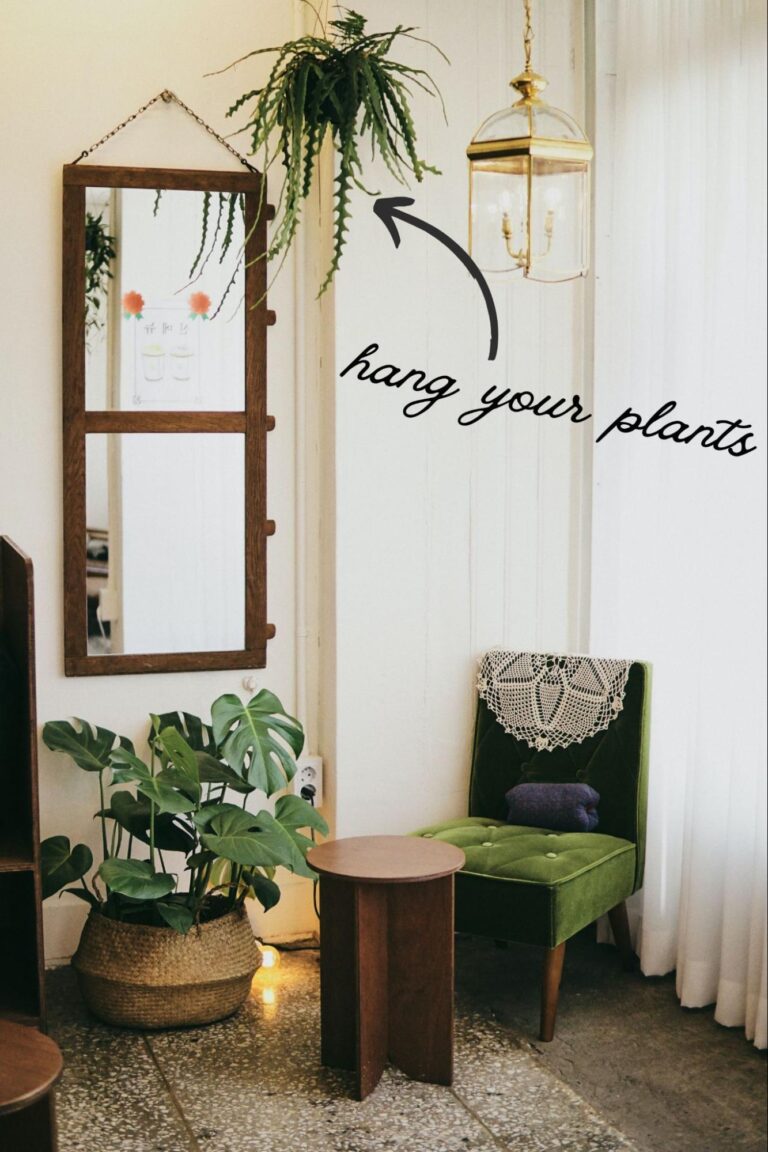
Another wonderful way to display plants is to hang them in special holders or baskets, utilizing curtain rods, hooks, nails, and so on. Macrame plant hangers continue to hold sway in plant lovers’ home decor ideas. You can find pretty and inexpensive macrame plant hangers on Amazon, Etsy, eBay, and many many other online marketplaces. If you’re into arts & crafts, you can of course also make one yourself with the help of online tutorials.
Pets can be quite hazardous to houseplants and likewise. So before buying a houseplant you have to ensure it won’t be poisonous or deadly to your pets in case they decide to snack on them.
You also have to place them where they won’t be within easy reach. Cats and other pets can jump really high so keep that in mind when making room for your plants.
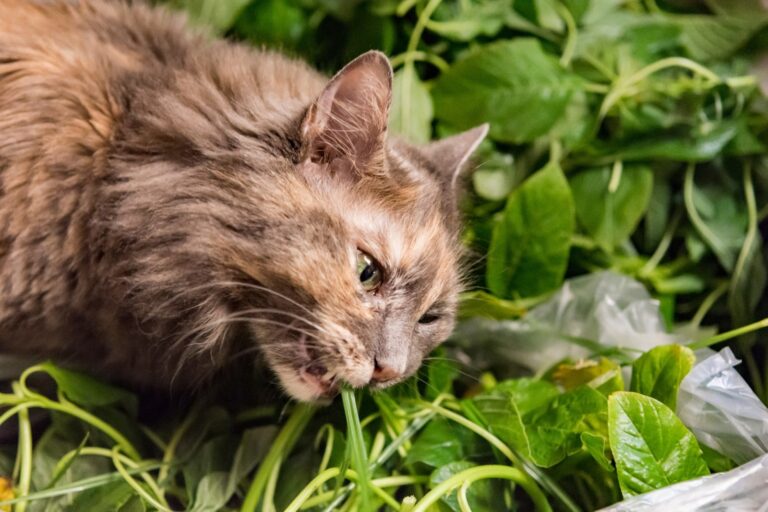
Some plants that are toxic to cats and dogs are:
…And many more, so do your research according to the particular needs of your house pet.
Some houseplants require regular watering and care. So if you’re someone who spends prolonged periods away from home, go for plants that don’t require regular watering like cacti and succulents.
Choose plants that go for long periods with little to no water, unless every time you return you will be coming home to dead plant after dead plant.
So now that you know what to consider before getting your plants, how do you turn your home into a lovely little indoor garden? Let’s talk about it.
Beginning a home jungle is definitely the easiest part of this entire decorative process. All you have to do is group various plants together.
It doesn’t matter their color, size, shape, and height – as long as they are compatible in terms of light and humidity requirements, you’re good to go! Grouping different plants together is the best way to add extra spice to your home jungle. You don’t have to worry about getting matching plants unless you want to. It’s your home so feel fit to pick as many plants and as many different types as you like.
The beauty of a home jungle is in the contrast of one plant to another and how they harmoniously create a warm environment.
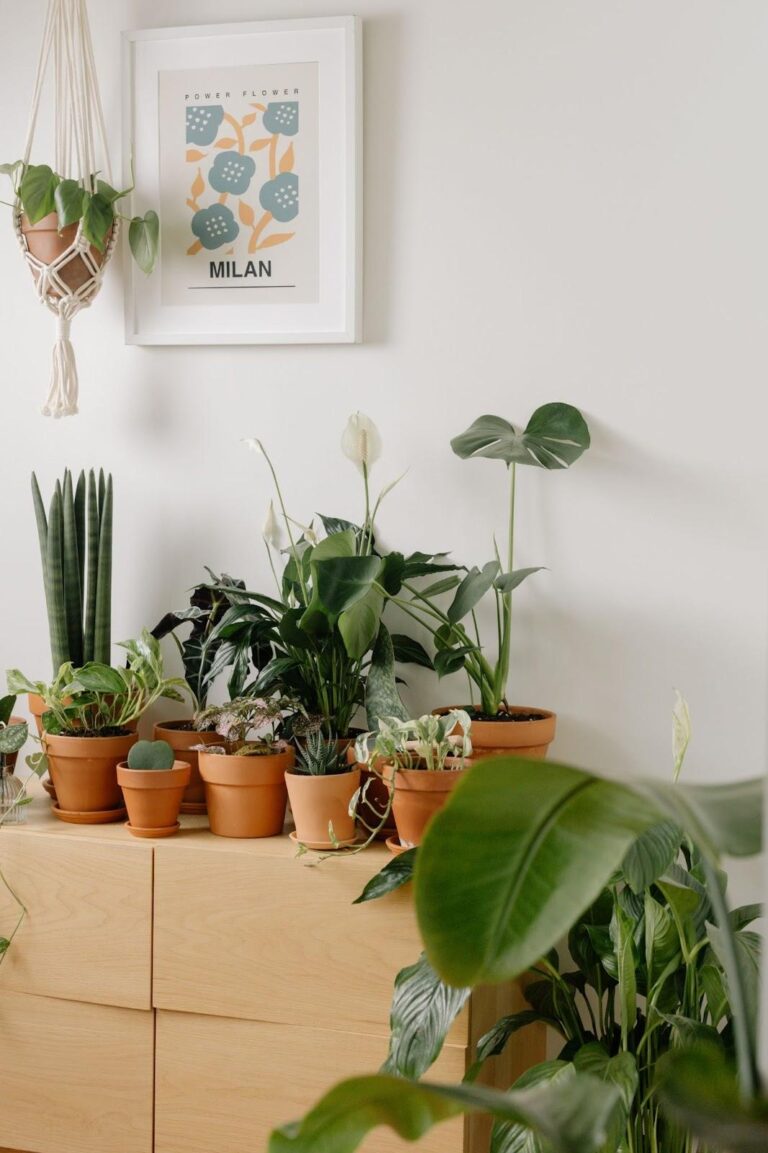
For example, plants that will go perfectly together are those that prefer humid conditions:
One thing to keep in mind when grouping your houseplants is to not overcrowd them as this may lead to a lack of airflow and thus moisture build-up, resulting in pests and diseases.
Stacking or placing your plants in the right places is very important.
You can put your plants on the floor, on window sills, or on shelves, tables, and carts in front of your window. You can also invest in a nice plant stand that fits your interior. If you’re lucky and find something extraordinarily antique or vintage it could also act as a decoration piece.
Avoid placing your houseplants in areas like near a doorway, or near radiators. Most houseplants aren’t fans of drafts or dry hot air coming from heaters. This may cause their leaves to dry and fall off, and eventually kill your plants.
Every jungle always has that one dramatic and over-the-top plant. This plant usually stands out because of its size. So what better way to create a home jungle than to add at most one very dramatic plant?
Try going with a dracaena, money tree, or a mass cane plant.

A luscious house jungle requires time, work, and commitment. With the exception of hardy varieties like the ZZ plant or the sansevieria, forgetting about your plants for even just a week or two can have severe consequences. If you want to maintain a healthy green bunch, you must be able to put in effort. Let’s have a walk through of houseplant care basics.
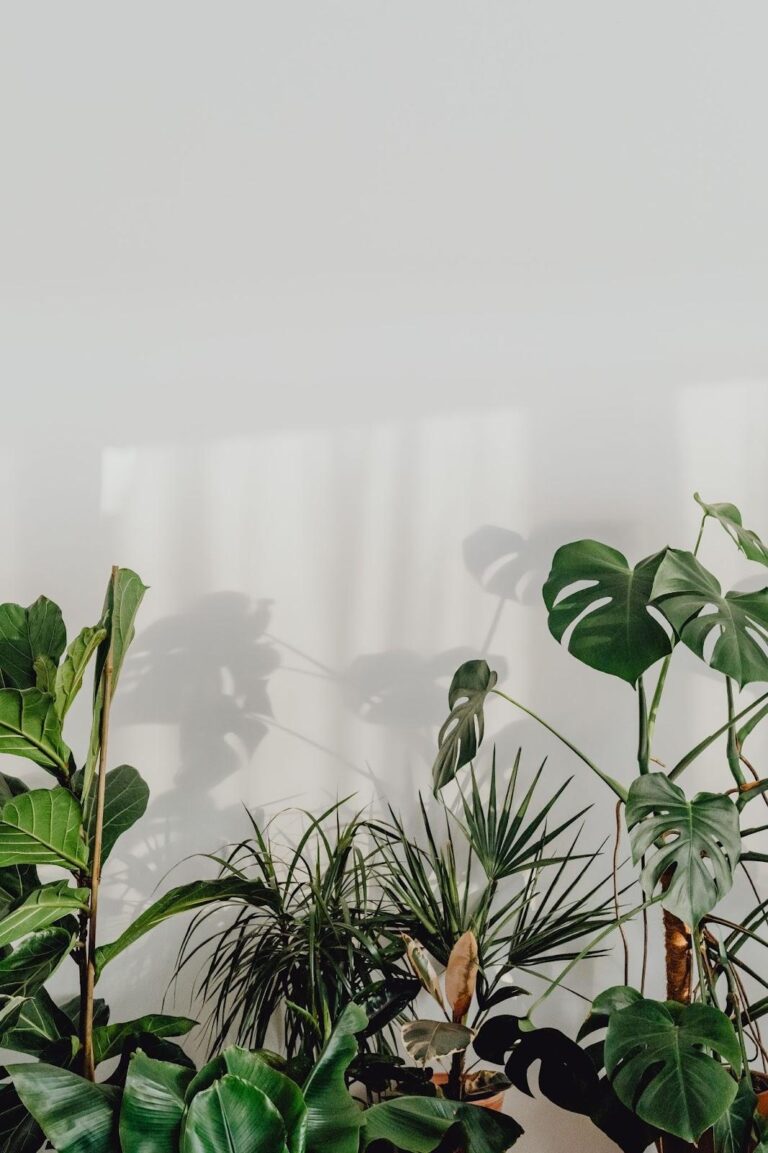
New plants are sold in the small pots they were initially grown in. In most cases, the roots of these plants have overgrown their pots. So when you purchase a new plant it is best to repot it using a bigger pot and fresh compost.
This will give your new baby more nutrients and help them grow faster.
Also, put little drainage holes in the new pot so water won’t sit in the pot.
To stimulate new growth, regularly cut away dead or yellow leaves. Also, prune above ‘nodes’ on the stems. Pruning is essential to keep your plant healthy.
This will not only encourage new shoots in your home jungle friends but also let you expand your plant collection at a very low cost. Make sure to disinfect your shears or scissors with rubbing alcohol before you cut off any stems. Always cut above at a node and avoid cutting off any new growth.
New cuttings will look nice and fresh when placed in glass containers with water while you wait for the roots to develop. Just make sure you don’t keep them in there for too long – once the roots have grown long enough, plant the cutting in fresh soil.

Like regular household items, houseplants also need dusting. Don’t skip this part of maintenance as dust on plants can prevent them from getting adequate sunlight. All you have to do is clean them with a damp cloth or place them in the shower if they’re the water/humidity loving ones.
To prevent yourself from over-watering your plants, wait till their soil is almost dry before watering. Plants usually need the soil to be moist and not drenched, so don’t overdo it.
To aid drainage in cases of overwatering, ensure there are holes at the bottom of the plant pot to remove excess water.
Now that we’ve discussed how to properly care for your houseplants, let’s finally talk about the kind of houseplants you may want to start your home jungle with.

If you love plants but have limited space, then you may want to opt for some tiny houseplants. Some examples of tiny houseplants are: peperomia, pilea, begonias, and fittonia.
If you are going to opt for the aesthetically pleasing hanging plant, a few options to consider are the Swiss cheese vine, hoya, pothos, or devil’s ivy and string of hearts.

For those who travel often or those whose homes don’t receive enough sunlight, here are some plants that’ll still strive in your home: snake plant, ZZ, cast-iron plant, lucky bamboo, and peace lily.
Creating a home jungle or decorating with plants is not a very complex feat to achieve. With the right mindset, knowledge, and tools, you can successfully turn your home into an amazing plant home/home jungle.
I hope that everything in this article will help you create the home jungle of your dreams.
